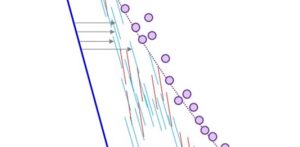GeoFest at the Abberley and Malvern Hills Geopark
Merlin has posted a number of times about its sponsorship of the Abberley and Malvern Hills Geopark, but we have never fully introduced it. This blog aims to correct that oversight and introduce you to a scenic part of the country that we are lucky enough to have on our doorstep. The many walks and trails over the Geopark can be enjoyed throughout the year, but if you visit in the summer, you will find even more on offer in the form of GeoFest. This is a programme that runs for three months every summer, providing a range of events including talks, guided walks, exhibitions, rock and fossil hunts, dinosaur trails, pond dipping, wildlife expeditions, craft days, heritage events, history tours and much more. Whether you are looking for an activity for yourself or one to keep the children occupied, there is something for everyone. Head to the Geopark website for the full list of events, which this year are running from 25th May, yes you have already missed some, through to 1st September.
Introducing the Abberley and Malvern Hills Geopark

The Abberley and Malvern Hills Geopark covers parts of the counties of Gloucestershire, Herefordshire, Shropshire, Staffordshire and Worcestershire. Rocks within the park span 700 million years of geological time and underly both the heritage and wildlife of the area. The park also includes the National Trust estates of Croome and Dudmaston, as well as the West Midlands Safari Park, Worcester Catherdral and of course the Abberley and Malvern Hills. So, whether your interest is in geology, wildlife, archaeology, art, heritage or just getting outdoors, there is something for you. Find out more on the Geopark website here.

The Abberley Hills are located in the north of the Geopark and are comprised of a ridge of 8 hills formed during the Silurian period 420 million years ago. During the closure of the ocean between the African and European plates, these limestone deposits were uplifted along a line of weakness. They now stand proud of the surrounding Permian and Triassic Sandstones which have been eroded away.

To the south, the Malvern hills are the oldest rocks of the Geopark, having formed 680 million years ago during the PreCambrian. They are made up of igneous and metamorphic rocks formed beneath a volcanic island arc, where the descending tectonic plate is subjected to intense heat and friction which melts the rock to form magma. This molten rock either cools slowly deep within the crust, or it rises to the surface and cools quickly. Examples of the latter, in the form of pillow lavas, were found by Merlin staff when we took a walk around the Malvern Hills and British Camp during an EO (Employee Ownership) day celebration a couple of years ago, see photo above. The areas to the side of the hills are made of softer sedimentary rocks which have since been eroded away, leaving the harder igneous rocks to form the spine of the Malvern Hills, see photo below.

If you are interested in archaeology there are sites ranging from the Neolithic period to when people settled on the river Severn terrace from the Bronze Age (1000 BC). The Iron Age hillforts of Midsummer Hill and British Camp (see photo above) are the most prominent remnants of this period. The area is also home to significant industrial and mining heritage which reflects the geological variation of the area.
Finally, for those interested in flora and fauna habitats, there is a diverse mix in the Abberly and Malvern Hills Geopark, ranging from acidic grassland with heathers and grasses, to the Wyre Forest, one of the most important areas of semi-ancient woodland in the country. Terraces of the River Severn provide heathland, sand loving plants and the perfect environment for newts! Finally, the Teme Valley is important for its tufa springs that are rich in Calcium Carbonate. The precipitated tufa is an important “geoindicator” of current environmental status.
Hopefully this has given you a flavour of what the Abberley and Malvery Hills Geopark has to offer and has inspired you to visit!




